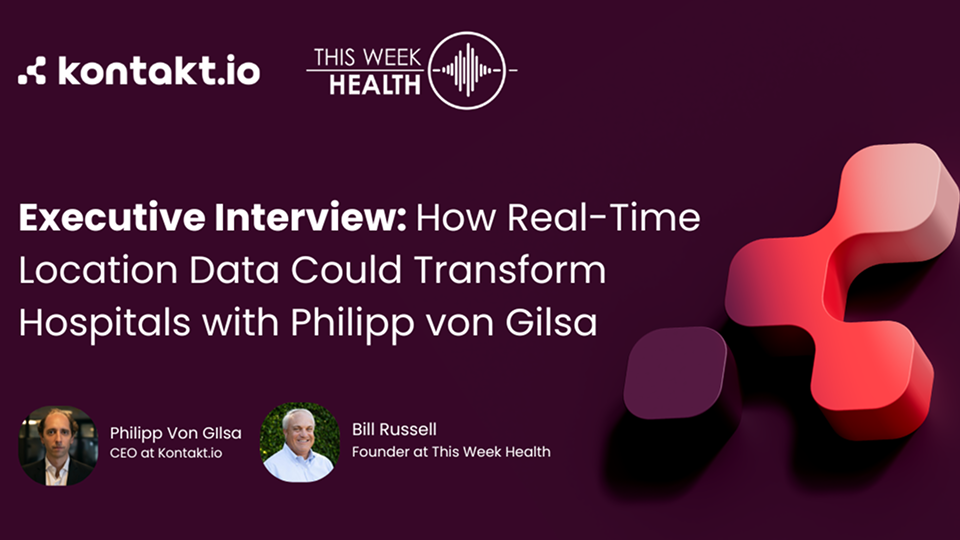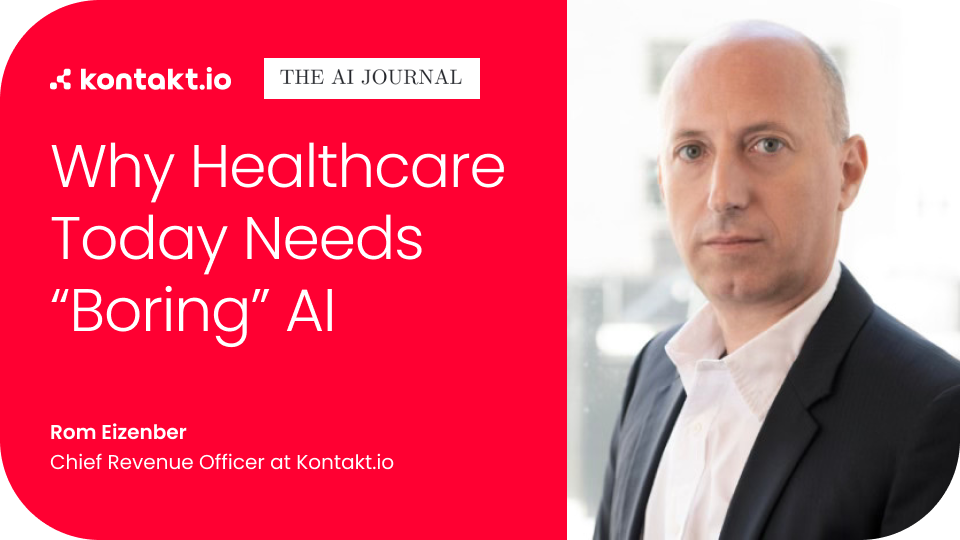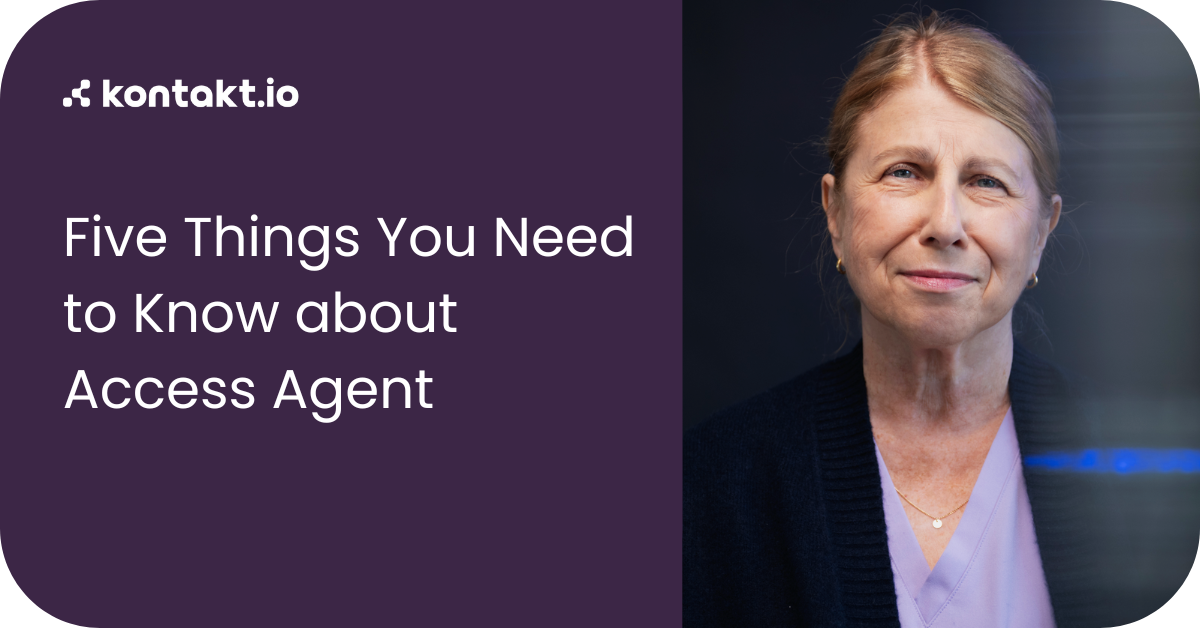by Mike Cummings, Chief Security Advisor, Kontakt.io
Hospitals are places of healing. But for frontline workers, hospitals can be places of violence, harassment, and abuse. Today, hospital workplace violence is a growing epidemic. Over 80% of nurses report being physically or verbally assaulted on the job in the past year. And almost half say the problem is getting worse.
The recently released Security Design Guidelines for Healthcare Facilities from the International Association for Healthcare Security and Safety (IAHSS) couldn’t be more timely. These peer-reviewed recommendations aim to help healthcare systems proactively integrate hospital staff safety solutions into their environments, operations, and technologies.
As someone who’s spent a career in security, I believe these new guidelines are more than just a roadmap — they’re a wake-up call.
A Systemic Problem Demands Systemic Design
The updated IAHSS guidelines include actionable recommendations for outpatient clinics, emergency departments, and high-risk hospital areas. This report encourages the deployment of staff duress hospital systems, wearable panic buttons, improved access control, and real-time (RTLS) alert technology that helps mitigate threats before they escalate.
Key recommendations include:
- Duress alarm system integration
- Use of wearable panic buttons for nurses
- Situational awareness tools like motion sensors, door contacts, and mobile duress alarms
- Defined procedures for response to aggression, elopement, or code grey events
- Documentation for analysis and improvements
One takeaway is clear: healthcare facilities must shift from reactive security postures to proactive, tech-enabled, and integrated strategies that center around staff safety for nurses, clinicians, and other caregivers.
From Policy to Protection: What Smart Systems Can Do
At Kontakt.io, we’re seeing forward-looking health systems take these guidelines seriously — and take action. One standout example is Northeast Georgia Health System (NGHS), where over 10,000 employees now wear Kontakt.io RTLS smart badges equipped with a mobile panic button.
When staff encounter a threatening situation, they simply press the badge button that sends a silent alert to security and staff with their identity and precise location in real time. This kind of hospital duress alert system is easy to implement, easy to wear, and easy to use.
In fact, the solution is so fast and easy to deploy and implement, some health systems are scaling across entire facilities and additional use cases. Holyoke Medical Center initially deployed Kontakt.io’s Staff Safety solution in the Emergency Department. After the success they saw, leadership expanded the solution to other departments and expanded to other use cases.
With Kontakt.io’s Smart Badge mobile duress hospital solution, healthcare systems can protect their nurses and other staff for about the price of a cup of coffee per staff member, per month.
Why Mobile Duress Technology is the Future of Hospital Safety
Legacy panic buttons often require someone to be standing at a workstation. But real threats don’t happen neatly next to a nurse’s station. They happen in hallways, patient rooms, and even bathrooms.
That’s why mobile staff duress hospital systems with wearable panic buttons are becoming essential tools for hospitals aiming to modernize their safety infrastructure.
Plus, alerts can be sent to mobile devices. It’s not only the caregiver who can send an instant alert from wherever they are, but the security team can receive the alert wherever they are as well. Gone are the days of security staff sitting behind a desk in the basement. Hospital staff are always in motion and the most effective security systems function accordingly.
With Kontakt.io:
- Alerts are activated, sent and received, from anywhere in the facility
- Real-time location data enables faster emergency response
- Systems integrate with existing security and IT platforms
- Deployment is quick, with no additional cabling or network strain
- Caregivers are happy to see leadership invest in their safety and security
Hospital Workplace Violence Is Preventable: A Safer Future Starts Now
The IAHSS guidelines make a strong case: protecting staff isn’t just about hardware, it’s about strategy. From response protocols and regular training to leveraging real-time location systems (RTLS) in hospitals, every step contributes to building a culture of safety.
Of course, no safety protocol works without the trust and participation of the people it’s designed to protect. That’s why we built every aspect of our nurse safety technology to be respectful, discreet, and empowering.
Providing a safe work environment for caregivers is now table stakes. And the health systems that embrace data-driven, platform solutions will see ROI in the wellbeing and satisfaction of their staff.
Every day a hospital waits to modernize its staff protection is a day it risks another preventable incident. Mobile panic buttons, cloud-based analytics, and guidelines like those from the IAHSS, provide a great opportunity for implementing a new staff safety solution without burdening your IT or security teams.
Creating safer environments for clinicians doesn’t just protect staff — it improves patient outcomes, boosts morale, and helps solve the staffing crisis. Let’s turn the IAHSS recommendations into reality. Let’s make hospitals safer—by design.




